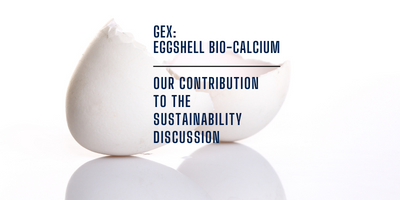
March 30, 2023
GEX ~ In an Eggshell
GEX eggshell bio-calcium is a game-changer for companies and brands who either need to meet plastic reduction mandates, or who need to meet their own strict sustainability policies. Before we

GEX eggshell bio-calcium is a game-changer for companies and brands who either need to meet plastic reduction mandates, or who need to meet their own strict sustainability policies. Before we